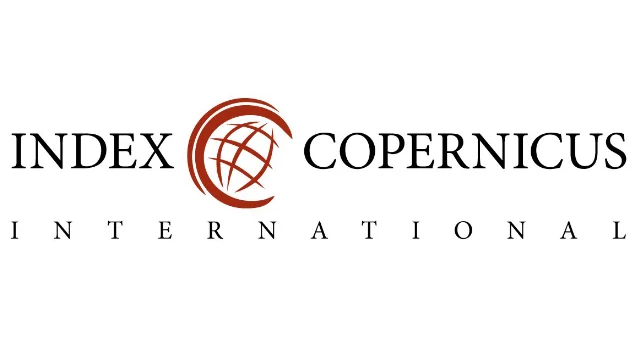A Petri Net Computational Model for Web-based Students Attendance Monitoring
Keywords:
Web based student attendance, Petri nets, computational model, monitoringAbstract
Monitoring student's attendance in classes is necessaryfor proper assessment of their understanding and performance in a course module. Attendance nzonitoring in a manual teaching ånd leanüng setting is easier than in web-based. The major reason for the inherent difficulty is that the latter provides virtual teaching and learning relationship in which students are not seen, whereas thefonner involves physical orface-to-face teaching and learning. Research and evidence showed that good attendance has a direct impact on student's success in a course module. The paper presents an overview of studentteacher relationship in an educational environment. Subsequently, a Inathematical model description using Petri nets is provided to capture web- based student attendance. The entpirical exanzple and corresponding output using Microsoft Excel justified the modeling power of Petri nets. The framework presented can be embedded into custom online academic programnte to track student attendance in course modules.
Similar Articles
- Alhaji Modu Isa, Aishatu Kaigama, Akeem Ajibola Adepoju, Sule Omeiza Bashiru, Lehmann Type II-Lomax Distribution: Properties and Application to Real Data Set , Communication In Physical Sciences: Vol. 9 No. 1 (2023): VOLUME 9 ISSUE 1
- Mu’awiya Baba Aminu, Hareyani Zabidi, Juliet Ngozi Chijioke-Churuba, Saleh Mamman Abdullahi, Kolapo Fasina, Aliyu Abubakar, Muhammad Nurudeen Mashin, Abdulmalik Nana Fatima, Bertha Onyenachi Akagbue, Olusola Kolawole Ogunmilua, Environmental and Public Health Challenges of Phases Towards Cement Production, Remediation Monitoring and Evaluation Strategies , Communication In Physical Sciences: Vol. 12 No. 1 (2024): VOLUME 12 ISSUE 1
- Aniekan Udongwo, Monitoring, Assessment, and Remediation of Heavy Metal Contamination: Techniques, Strategies, and Policy Frameworks , Communication In Physical Sciences: Vol. 10 No. 3 (2023): VOLUME 10 ISSUE 3 (2023-2024)
- O. I. Olusola, R. T. Ogundare, A. I. Egunjobi, E. O. Odufuwa, M. O. Esan, U. E. Vincent, Chaos Synchronization Based on Linear and Adaptive Controls: Theory and Experiment , Communication In Physical Sciences: Vol. 7 No. 3 (2021): VOLUME 7 ISSUE 3
- Edith.U. Omede, 2Optimization of Determinant Diagnostic Symptoms for Febrile Diseases using Genetic Algorithm , Communication In Physical Sciences: Vol. 8 No. 4 (2022): VOLUME 8 ISSUE 4
- Irene Edem Johncross, Fanifosi Seyi Josiah, Abidemi Obatoyinbo Ajayi, Resource recovery from Sugar Cane Biomass for the Synthesis of Silicon Nanoparticles , Communication In Physical Sciences: Vol. 12 No. 1 (2024): VOLUME 12 ISSUE 1
- Ase M. Esabai, Edikan E. Akpanibah, Sylvanus K. Samaila, On Investment Model for a CARA Pension Scheme Member with Return of Contributions Clause for Mortgage Housing Scheme , Communication In Physical Sciences: Vol. 11 No. 3 (2024): VOLUME 11 ISSUE 3
- Onanuga Omotayo Aina, Titus Morrawa Ryaghan, Bello Musa Opeyemi, Momoh Daniel Clement, Goat Horn Biochar as a Low-Cost Adsorbent for the Removal of Cadmium and Zinc ions in Aqueous Solution , Communication In Physical Sciences: Vol. 10 No. 3 (2023): VOLUME 10 ISSUE 3 (2023-2024)
- Nyeneime W. Akpanudo, Onyeiye Ugomma Chibuzo, Musanga cecropioides Sawdust as an Adsorbent for the Removal of Methylene Blue from Aqueous Solution , Communication In Physical Sciences: Vol. 5 No. 3 (2020): VOLUME 5 ISSUE 3
- Uchechukwu Susan Oruma, Pius Oziri Ukoha, Collins U. Ibeji, Lawrence Nnamdi Obasi, Obinna C. Okpareke, Ebubechukwu N. Dim, Klaus Jurkschat, Ponnadurai Ramasami, Synthesis, Spectroscopic, Biological and DFT Studies of 2,4,6-Tris(4-Carboxyphenylimino-41-Formylphenoxy)-1,3,5-Triazine and its Trinuclear Dy(III) and Er(III) Salen Capped Complexes , Communication In Physical Sciences: Vol. 7 No. 3 (2021): VOLUME 7 ISSUE 3
You may also start an advanced similarity search for this article.




